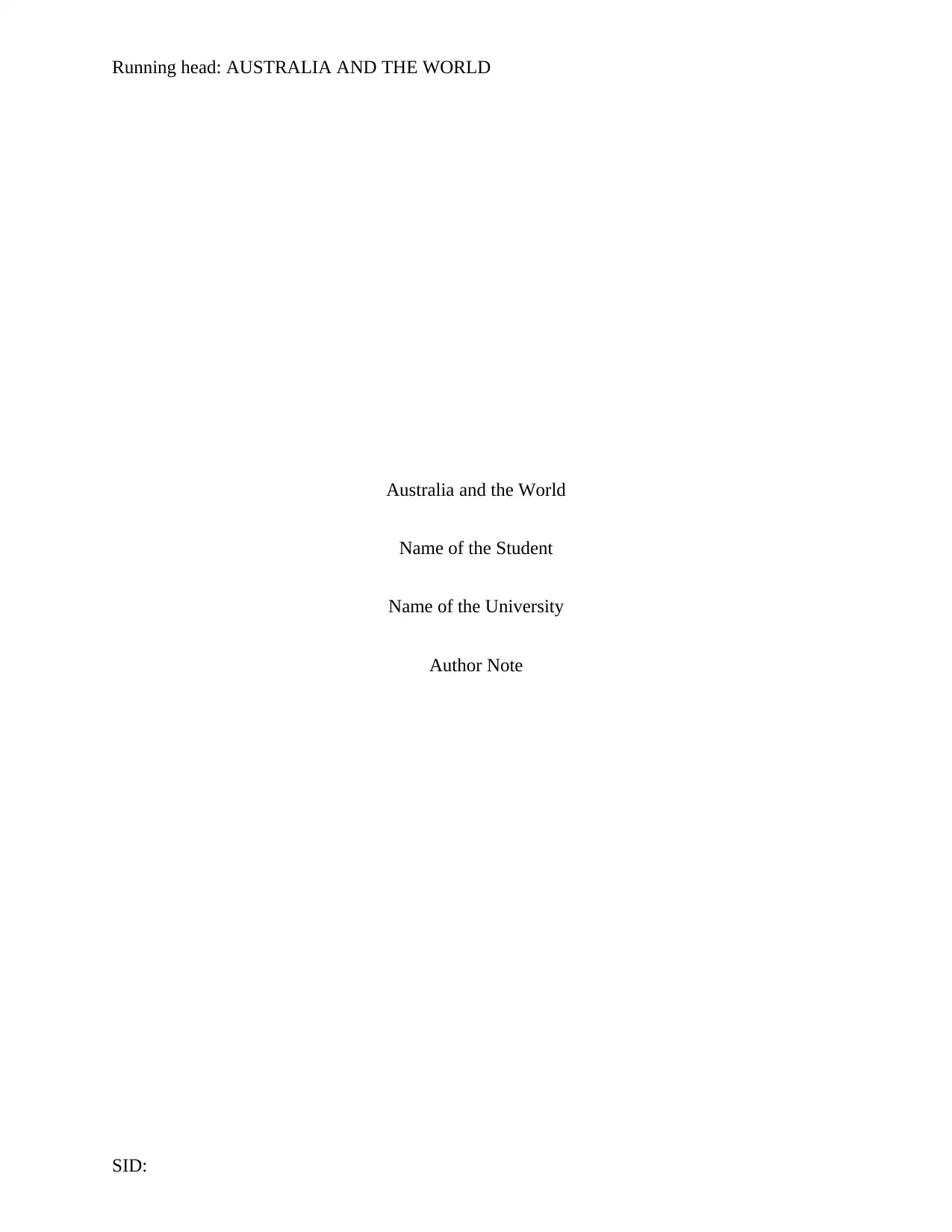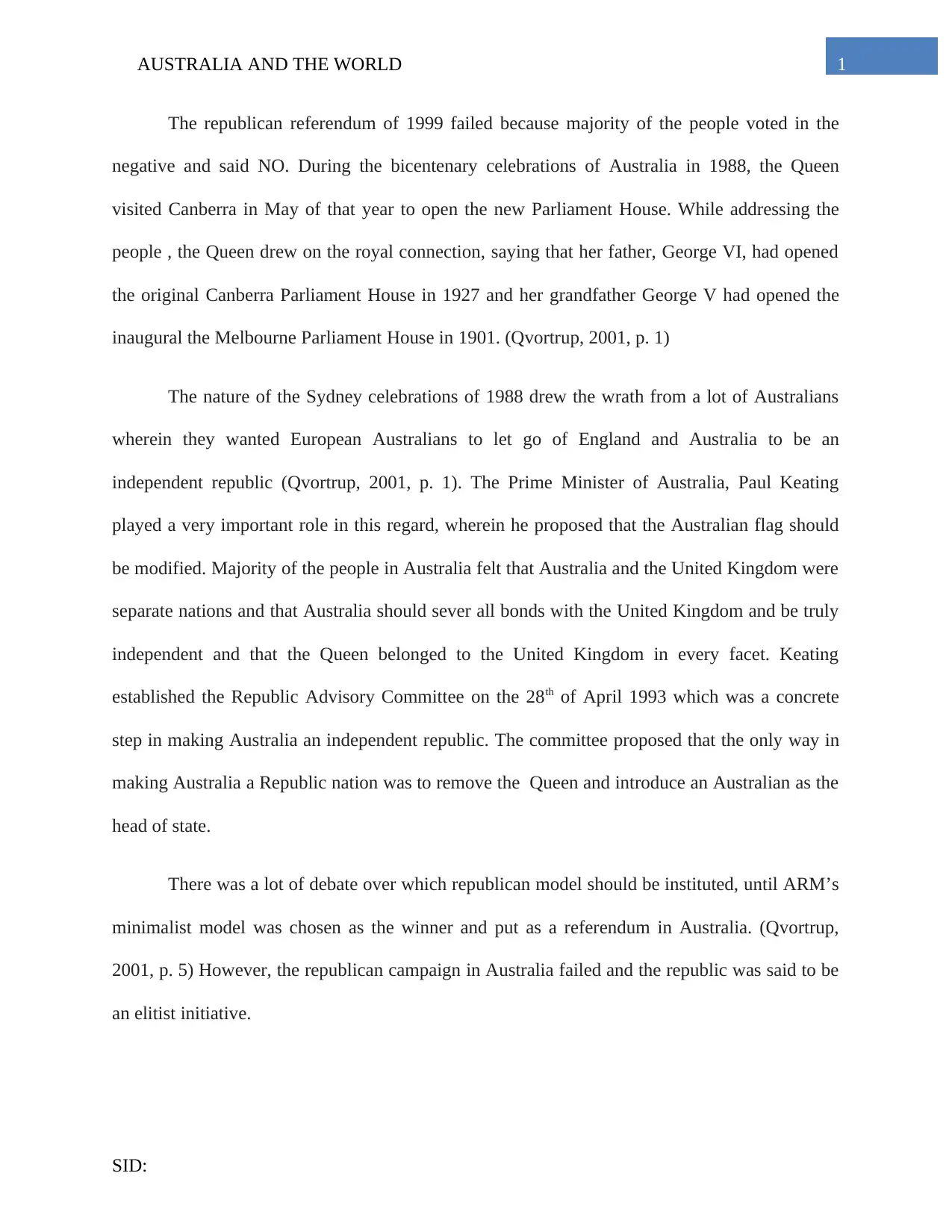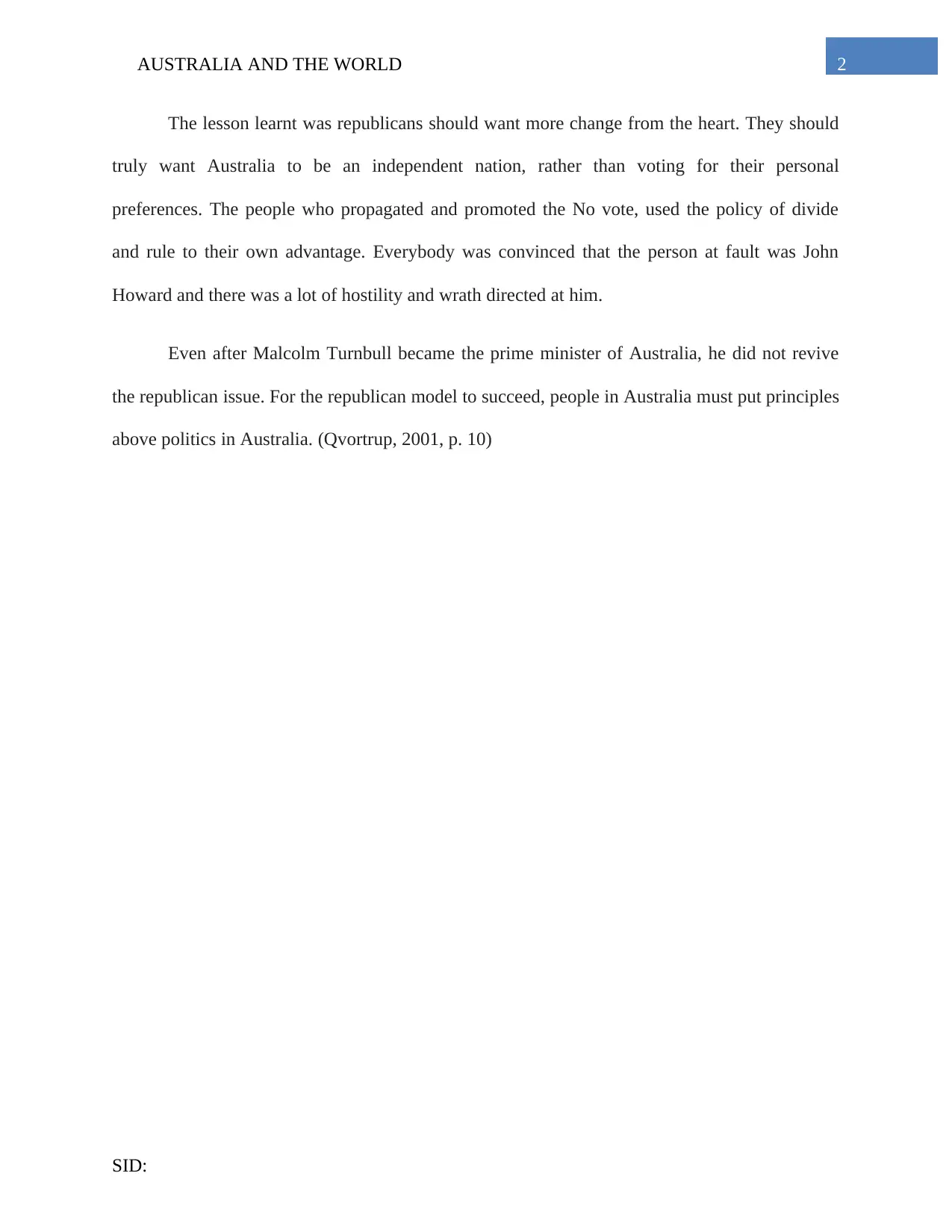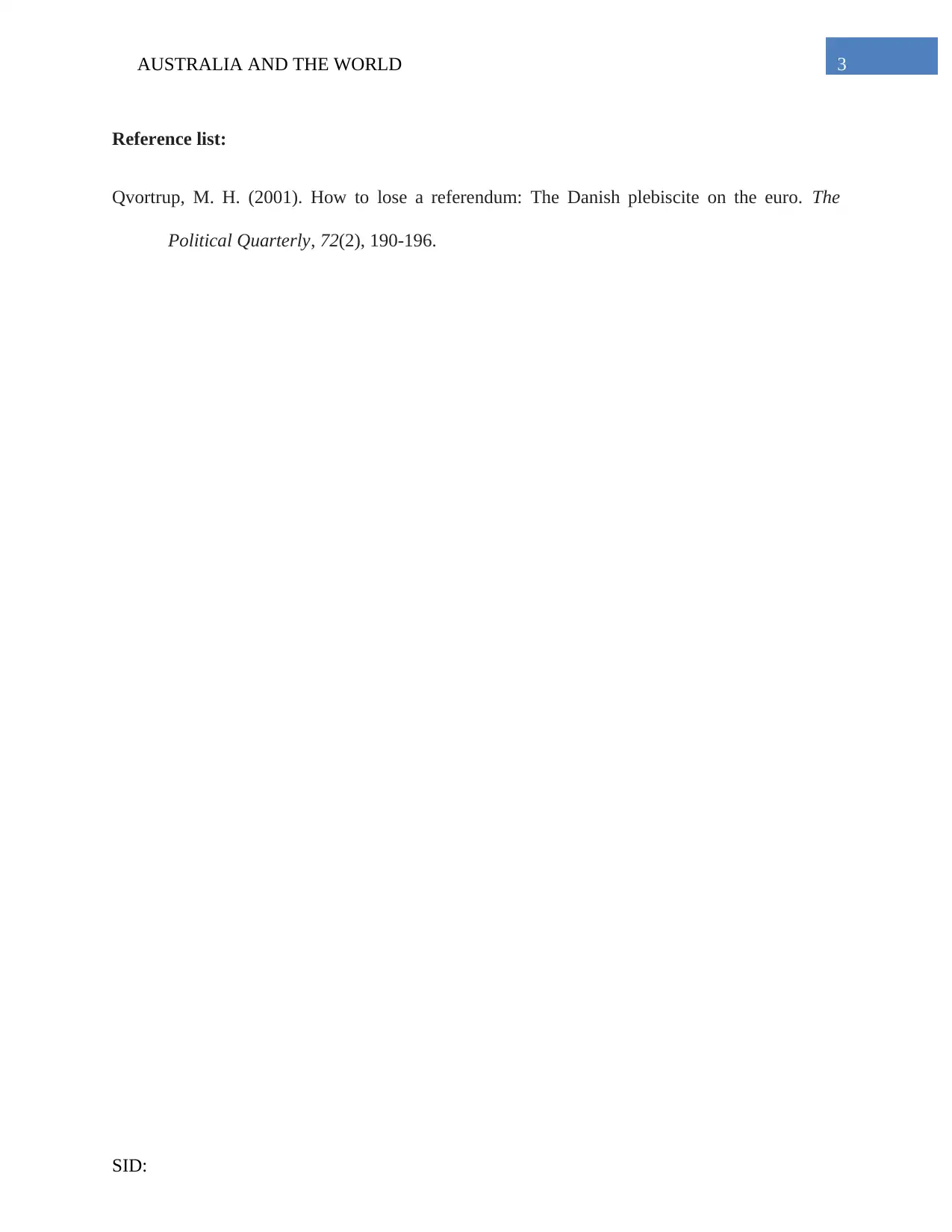Examining the Factors Leading to the Failure of the 1999 Referendum
VerifiedAdded on 2023/06/08
|4
|527
|278
Essay
AI Summary
This essay explores the reasons behind the failure of the 1999 republican referendum in Australia. It highlights that despite a significant portion of the population supporting the idea of Australia becoming a republic, the referendum did not pass due to various factors. The essay points out that many republicans voted against the proposed model, indicating a lack of unity among supporters. The role of political figures, such as Prime Minister Paul Keating and later John Howard, is also examined in shaping the debate and influencing the outcome. The essay concludes that for any future republican movement to succeed, principles must be prioritized over political divisions, and a more unified approach is essential. The essay references Qvortrup (2001) to support its analysis of the referendum's failure and the lessons learned from it.
1 out of 4





![[object Object]](/_next/static/media/star-bottom.7253800d.svg)